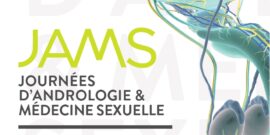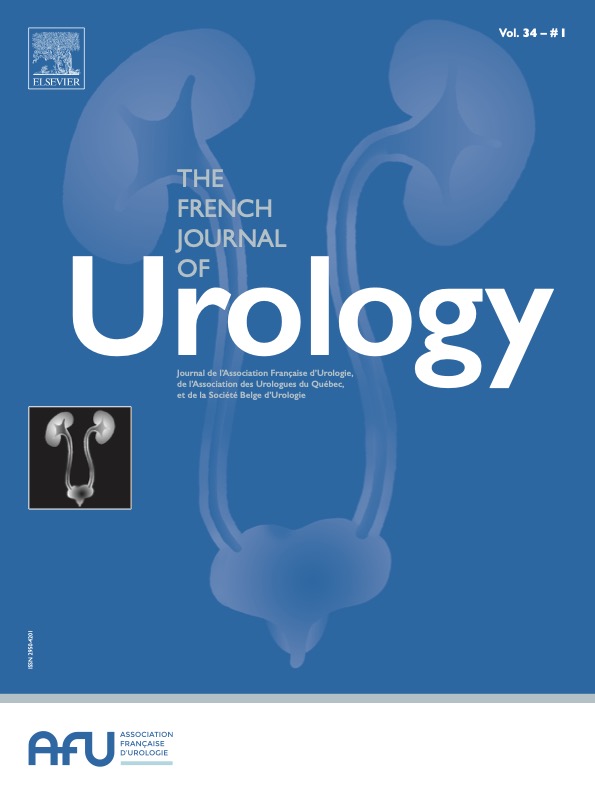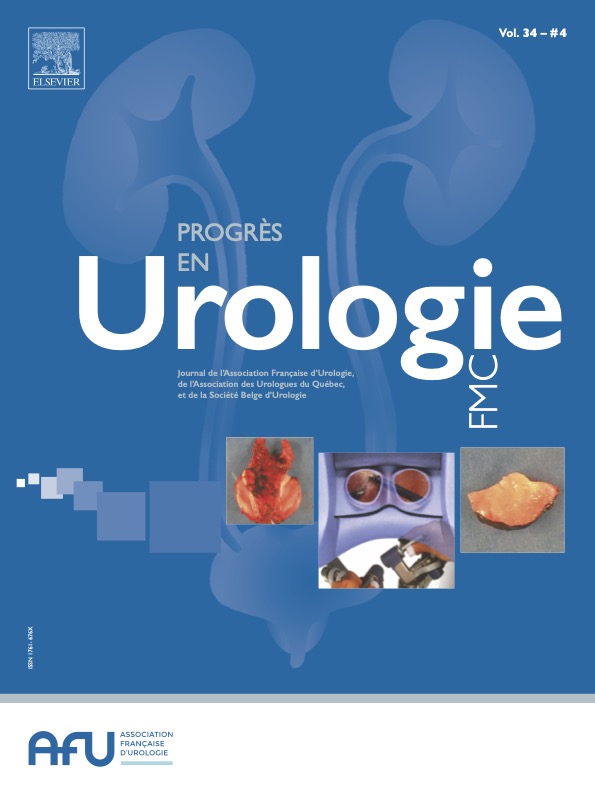This chapter is based on the European Association of Urology (EAU) recommendations [1]; it has not been the subject of a systematic bibliographic strategy. The recommendations are for the most part similar to those of the EAU because they are in adequacy with the French context and because the new data published since the EAU literature search do not change the previous conclusions. However, our literature search strategy identified one meta-analysis [2]/level of evidence (LOE1) and one multicenter randomized trial [3] (LOE2).
Interventional stone management has three main objectives:
• | stone elimination (stone-free);
|
• | symptom elimination, whether related to the stones or to their treatment, to maintain the quality of life (symptom-free);
|
• | kidney function preservation, especially in patients with very active urinary stone disease.
|
In addition, the aim of the subsequent metabolic management is to prevent stone recurrence and the morbid consequences and risks related to urinary stone disease (e.g. bone, vascular risk).
Quality of life is affected by renal colic episodes and other symptoms, but also by the number of interventions [4]/LOE2, ureteral stenting duration, and visits to the emergency department. Therefore, the intervention technique should ideally be chosen by taking into account the available equipment, the patients’ contraindications and individual preferences, in order to eliminate completely the stone and symptoms in the shortest possible intervention time and/or with the smallest number of interventions. Moreover, these objectives cannot be obtained at the price of a decrease in quality of life (concept of “marginal utility”).
The evaluation of quality of life in studies on interventional stone treatments is not standardized yet, although common tools are used (e.g. SF-36, QALY). For identical results in terms of stone-free rate, there are not enough data to favor one specific technique.
Similarly, the effectiveness of a given technique cannot be described only by its stone-free rate, if the total number of interventions is not taken into account. Some authors propose to combine the stone-free rate with the mean number of interventions per patient [5, 6, 7].
Maintaining the quality of life of a patient requires controlling the number and intensity of painful episodes as well as the number of treatments and the effect on the patient's professional/social life. This therapeutic objective is obviously very variable and difficult to quantify.
The objective of having a patient without stone/fragments requires a postoperative imaging evaluation to detect residual fragments and possible complications linked to the treatment or to the presence of fragments (hematoma, obstruction of the upper urinary tract).
|
| Definition of residual fragments/stones |
After kidney stone treatment (extracorporeal shock wave lithotripsy, ESWL, or endoscopy), fragments may persist in the kidney, either deliberately left in place or due to treatment failure (residual stones resistant to ESWL, left or inaccessible by endoscopy) or due to impossibility to eliminate all the obtained fragments (residual fragments).
It has been demonstrated that during endoscopic treatment of a stone, the concomitant treatment also of asymptomatic stones ≤6mm reduced the recurrence risk by 82% (16% vs 63%), and increased the interval to recurrence by 75% (16.316±72.8 vs 934.2±121.8 days) [3]. Residual stones (deliberately left or due to treatment failure) are managed as done for the initial stones, but surveillance must be preferred in case of asymptomatic and uncomplicated stones, and a new intervention and/or a new intervention technique may be envisaged in case of symptomatic or at risk stones (Figure 1).
Figure 1.
Management of residual stones and fragments.
Residual fragments may be spontaneously eliminated, persist, increase in volume (2–33.8%), or become complicated and require a secondary urological procedure [8]/LOE3 [9]/LOE4 [10]/LOE4 [11]/LOE4 [12]/LOE4 [13]/LOE4 [8]/LOE4 [2]. The rates of spontaneous clearance, reintervention, and progression reported in the meta-analysis by Brain et al. were 42% at >50 months, 36% at >50 months, and 32% at 35–49 months, respectively [2].
The most widely used definition of residual fragments in the literature is based on the size (≤4mm) and three criteria: spontaneous clearance rate, secondary intervention rate, and progression rate [9, 10, 11, 12]. In the meta-analysis by Brain et al., the rates of secondary intervention and of progression for fragments <4mm were 18.41% and 24.00% at 20 months, respectively [2].
During endoscopic treatment of kidney stones, fragmentation is performed in situ with a laser under visual control. Extraction is possible for supra-millimetric fragments, but laser treatment leads to the production of dust and multiple micro-fragments ≤1mm that cannot be optimally extracted. Two studies evaluated the complications related to residual fragments after ureteroscopy, and found that the rate of complications was higher and that they occurred earlier in case of residual fragments >4mm [12] (symptom rate of 18–19.6%) [12]/LOE4 [13]/LOE4. Only one study compared the fate of dust (<1mm) and fragments (<3mm) obtained with a Holmium laser during a 2-year follow-up and reported spontaneous passage rates of 40% and 25% and progression rates of 18.1% and 28.6%, respectively [14]/LOE4.
Due to their natural spontaneous clearance after ESWL or endoscopic treatment, residual fragment persistence is assessed by imaging generally after an interval of 4 weeks [15]/LOE4 [16]/LOE2 [17] (general review).
CT remains the most sensitive exam compared with ultrasound and plain abdomen radiography [18]/LOE4 [19]//LOE4, but it detects clinically insignificant fragments with a risk of overtreatment (>50% of patients with residual fragments on CT will not have fragment-related symptoms) [20]/LOE2 [21]/LOE4, and exposes to more radiation than ultrasound and radiography.
The bias in imaging assessment of residual fragment size after laser endoscopic treatment is related to the presence of both dust and micro-fragments that do not allow clearly distinguishing these fragments.
It has been shown that the risk of recurrence is increased in case of residual fragments from stones of infectious origin [22]/LOE4, but also in patients with metabolic disorder (cystine [V], dihydroxyadenine, brushite [23], [Ic], [IVa2] stones) [24]/LOE4 [25]/LOE4.
Therefore, like in the treatment of the initial stone, it is important to consider the composition during residual fragment treatment decision-making. Indeed, residual fragments from a uric acid stone may be treated by alkalinization; residual fragments from brushite and cystine stones may rapidly grow with potential resistance to ESWL; and residual fragments from infection stones are prone to rapid growth, risk of sepsis, and antibiotic resistance (due to repeated prescriptions).
Residual fragment management must take into account their nature (residual fragments or stones), the risk of complications (e.g. size, topography), the clinical context, and the stone composition (active lithiasis). Besides the residual fragment characteristics, their management (intervention or wait-and-see approach) and the choice of technique are evaluated for each individual patient on the basis of the clinical context: personal preferences or professional's experience, failure of previous treatments (particularly ESWL), contraindications (Figure 1).
This question was not addressed in this way in the EAU recommendations that did not distinguish between residual stones and residual fragments and did not take into account their complication risk and nature (Recommendation Table 1).
Ce chapitre s’appuie sur la recommandation de l’EAU [1] ; il n’a pas fait l’objet d’une stratégie bibliographique systématique. Les recommandations sont pour la plupart similaires à celles de l’EAU compte tenu de leur cohérence avec le contexte français et du fait que les nouvelles données éditées depuis la recherche bibliographique de l’EAU n’entraînent pas de modifications dans les conclusions. La veille bibliographique a, cependant, retenu une méta-analyse [2]/(NP1) et un essai randomisé multicentrique (Sorensen, 2022) (NP2).
La prise en charge interventionnelle des calculs répond à trois objectifs principaux (les 3 SF) :
• | éliminer les calculs (« Sans Fragment ») ;
|
• | éliminer les symptômes, qu’ils soient liés aux calculs ou à leur traitement et ainsi ne pas détériorer la qualité de vie (« Symptom Free ») ;
|
• | sauvegarder la Fonction rénale, notamment chez les patients avec lithiase très active.
|
Par ailleurs, la prise en charge métabolique ultérieure vise à prévenir la récidive calculeuse et les conséquences ou corrélations morbides de la lithiase (risque osseux, vasculaire etc.).
La qualité de vie est impactée par les épisodes de CN ou autres symptômes mais aussi par le nombre d’interventions [3]/NP2, la durée de drainage, le recours aux urgences, etc. Aussi, le choix d’une technique doit idéalement, en fonction des possibilités, contre-indications ou préférences individuelles du patient, viser à rendre un patient SFR en un minimum de temps et/ou d’interventions ; le SFR ne pouvant être obtenu au prix d’une baisse de la qualité de vie (concept de « l’utilité marginale »).
L’évaluation de la qualité de vie dans les études concernant les traitements interventionnels des calculs n’est pas encore standardisée bien qu’utilisant des outils connus (SF-36, QALY). À résultat identique en termes de SFR, il n’existe pas assez de données permettant de privilégier une technique par rapport à une autre.
De même l’expression du seul taux SFR ne peut suffire à décrire l’efficacité d’une technique si elle ne prend pas en compte le nombre total d’interventions. Certains auteurs proposent un taux de SFR couplé à un nombre moyen d’interventions par patient [4, 5, 6].
Le maintien de la qualité de vie à titre individuel passe par le contrôle du nombre et de l’intensité des épisodes douloureux mais aussi du nombre de traitements et de l’impact professionnel. Cet objectif thérapeutique est évidemment très variable et difficile à quantifier.
L’objectif d’obtention d’un patient SFR nécessite une évaluation postopératoire par imagerie cherchant à la fois des fragments résiduels mais aussi les complications possibles des traitements ou des fragments (hématome, obstruction du Haut Appareil).
|
| Définition des fragments résiduels (FR) |
Après le traitement de calculs rénaux (LEC ou endoscopie), des fragments peuvent persister au niveau des reins, soit laissés délibérément en place ou par échec du traitement utilisé (CR : calculs résiduels résistants à la LEC, laissés ou inaccessibles en endoscopie), soit par défaut d’élimination des fragments obtenus (FR : fragments résiduels ).
Il a été démontré que lors du traitement endoscopique d’un calcul, le traitement concomitant de calculs asymptomatiques≤6mm associés réduisait le risque de récidive de 82 % (16 vs 63 %), et en allongeait le délai de 75 % (16,316±72,8 j vs 934,2±121,8 j) [7]. Les calculs résiduels laissés ou en échec de traitement répondent aux mêmes indications que lors de la prise en charge initiale, mais doivent faire considérer l’option de la surveillance en cas de calcul non menaçant et asymptomatique, tout comme un nouveau temps et/ou un changement de technique opératoire en cas de calcul menaçant ou symptomatique (Figure 1).
Figure 1.
Prise en charge d’un calcul urétéral dans un contexte d’urgence et en l’absence de signe infectieux.
Les FR peuvent spontanément s’éliminer, persister, augmenter de volume (2–33,8 %) ou encore se compliquer et nécessiter un geste urologique secondaire [8]/NP3 [9]/NP4 [10]/NP4 [11]/NP4 [12]/NP4 [13]/NP4 [8]/NP4 [2]. Les taux d’élimination spontanée, de réintervention et de progression rapportés dans la méta-analyse de Brain étaient, respectivement, de 42 % atteints en plus de 50 mois, de 36 % atteints en plus de 50 mois et de 32 % atteints en 35–49 mois [2].
La définition la plus utilisée dans la littérature repose sur une taille≤4mm, évaluée sur trois critères : taux d’élimination spontanée, taux d’interventions secondaires et taux de progression [9, 10, 11, 12]. Les taux d’interventions secondaires et taux de progression respectifs pour des fragments<4mm rapportés dans la méta-analyse de Brain étaient de 18,41 % et 24,00 % à 20 mois [2].
Lors du traitement endoscopique des calculs rénaux, la fragmentation est réalisée in situ au laser sous contrôle visuel. Si l’extraction est possible pour des fragments supramillimétriques, le traitement laser est responsable de poudre (dust ) et de multiples micro-débris≤1mm dont l’extraction instrumentale n’est pas optimale de nos jours. Deux études ont évalué les évènements liés à la présence de FR après urétéroscopie, rapportant un taux de complications plus élevé et plus précoce en cas de FR>4mm [12], avec un taux de 18–19,6 % de symptômes liés à ces fragments [12]/NP4 [13]/NP4. Une seule étude a comparé le devenir de la poudre (dust ) (<1mm) à celle des fragments (<3mm) obtenus au laser Holmium au cours de 2 ans de suivi avec un taux de passage spontané de 40 vs 25 % et un taux de progression de 18,1 vs 28,6 % [14]/NP4.
En raison de l’élimination spontanée naturelle après une LEC ou un traitement endoscopique, un délai de 4 semaines est le plus étudié dans la littérature pour évaluer la persistance de fragments résiduels en imagerie [15]/NP4 [16]/NP2 [17] (revue générale).
Si la TDM reste l’examen le plus sensible en comparaison de l’échographie et au cliché radiologique d’abdomen sans préparation (ASP) [18]/NP4 [19]/NP4, il permet de détecter des fragments non significatifs qui font courir un risque de surtraitement (>50 % de patients avec des fragments résiduels à la TDM n’auront pas de symptôme lié à ces fragments) [20]/NP2 [21]/NP4, et expose à une irradiation supérieure à un contrôle par échographie et ASP.
Un biais d’évaluation en imagerie de la taille des fragments résiduels après un traitement endoscopique laser est lié à la présence cumulée de la poudre et des micro-débris qui empêchent une distinction claire de ces fragments.
Il a été démontré qu’un risque de récidive est majoré en cas de fragments résiduels de calculs d’origine infectieuse [22]/NP4 mais aussi en cas de désordre métabolique sous-jacent (Cystine [V], Dihydroxyadénine, Brushite [23], [Ic], [IVa2] [24]/NP4 [25]/NP4).
Comme dans le traitement du calcul initial, il est donc important de tenir compte de la composition lors de la prise de décision de traitement des FR. En effet, si les FR d’un calcul d’acide urique pourront être traités par alcalinisation, ceux de calculs de Brushite et de Cystine exposent à une croissance rapide avec une potentielle résistance à la LEC et ceux de calculs infectieux exposent à une croissance rapide, à des risques de sepsis et à l’apparition de résistances aux antibiotiques (en lien avec des prescriptions répétées).
La prise en charge des fragments résiduels tient compte de leur nature (calculs ou fragments résiduels), du risque de complication (taille, topographie…), du contexte clinique et de la composition des calculs traités (caractère actif de la lithiase). Outre les caractéristiques des fragments, leur prise en charge ou l’abstention ainsi que le choix d’une technique s’apprécie individuellement en fonction de critères du contexte clinique : préférences personnelles ou impératifs d’aptitude professionnelle, échec de précédents traitements – dont antécédent d’échec de LEC, contre-indications (Figure 1).
Cette question n’est pas traitée de la sorte dans la recommandation de l’EAU qui ne distingue pas les calculs des fragments résiduels, et qui ne tient pas compte de leur risque de complication ni de leur nature (Tableau de recommandations 1).
The authors declare that they have no competing interest.









